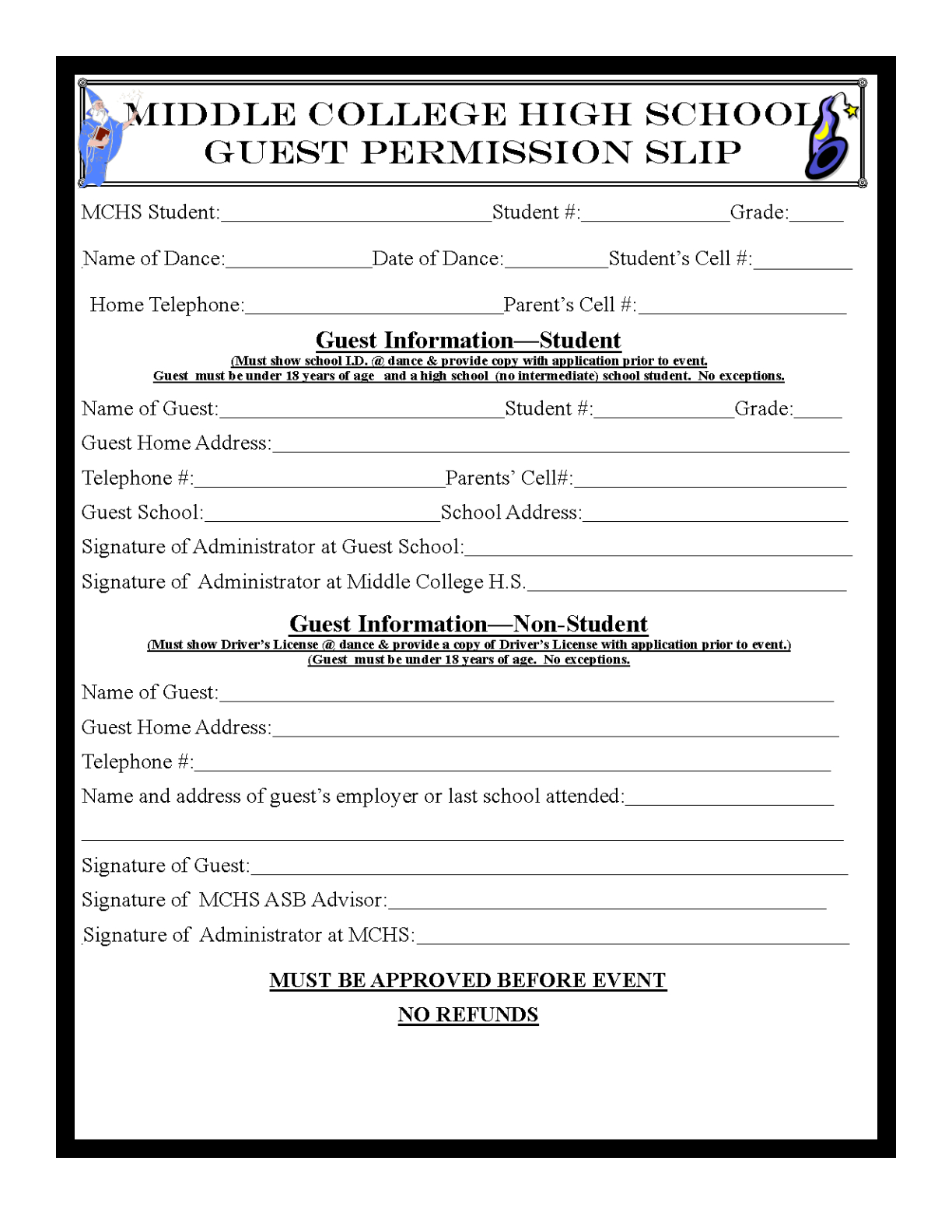Free blank school dance permission slip template -Have you ever looking for a simple and effective way to log something, whether it’s a financial transaction, a shipment, or even just a reminder for a peer? You’re one of many. We’ve all been there, scrambling for a fast document and trying to make sense of scribbled information later. That’s where the strength of a good Slip Template becomes useful. It’s a straightforward but effective tool that can bring order to so many daily processes.
Think about it: a uniform document for documenting data. No more questioning what that unclear term referred to or finding it hard to decipher the date. A professionally structured ready-made form ensures standardization and accuracy, which is essential for everything from financial transactions to stock tracking. It minimizes errors, saves time, and creates a credible appearance.
In the age of technology, pre-made forms are widely offered on the web, often at no cost. These documents can span across basic transaction records to detailed deposit slips and other variations. Many applications, like DOC templates or Excel, also offer built-in templates that you can effortlessly customize. We’ll take a closer look at some real-world applications and functional scenarios a bit down the line. So, let’s explore the realm of structured forms and how they can streamline your data management.
A pre-designed document is basically a formatted form that offers a standardized framework for recording essential details. It’s a adaptable template that can be adjusted to a broad spectrum of purposes, establishing it as an incredibly versatile tool for organizations, institutions, and even private needs. The main advantage is its ability to standardize data collection, ensuring that all relevant details are documented in a structured and accessible way.
Take into account, the function of a slip template in charitable institutions. These institutions often are supported by funding support to fund their operations, and accurately tracking these financial gifts is critical. A donation slip template enables them to record donor information, the funds given, and the date of the contribution in a structured layout. This not only simplifies record-keeping but also facilitates the development of accurate funding summaries.
But the usefulness of a structured form reaches beyond the commercial sector. You can also use it to organize your private financial records. For example, a deposit slip template can assist you in monitor your deposits, ensuring that you don’t overlook any key financial movements. Similarly, a fund removal form can help you to observe your money management and take control of your cost tracking.
The key advantage of using a structured form is the consistency it offers. By using a structured framework, you reduce the chance of mistakes and missing details. This is particularly essential when dealing with financial data or other confidential details. Furthermore, templates can reduce task duration. Instead of creating a custom file from scratch each time you need to document details, you can simply get the form and enter the necessary data.
Multiple categories of templates exist to accommodate specific needs. A bank deposit slip template, for example, will include sections for the financial identifier, the depositor’s name, and the money submitted. A financial exchange document, on the other hand, might include areas for the transaction sender, the fund recipient, the date of payment, and the total sum. The selection of template will be based on the type of information you need to log and the business preferences of your company.
The variety of structured forms is unexpectedly vast, with each version fitting a specific need. One popular format is the transaction record, structured to record a purchase between a purchaser and a seller. It often features areas for the transaction time, products bought, total sum, and any financial fees. Another popular type is the fund submission form, formatted to document deposits made into a bank account. This document usually includes fields for the account number, recorded moment, amount deposited, and any supporting details, like monetary denominations.
Beyond these widely used categories, there are also more specialized structured documents. For example, a dispatch confirmation is applied for track the delivery of goods, while a itemized content document details the shipped products. In the financial sector, a monetary exchange document is applied for approve the movement of money between business accounts, and a payment slip logs payments completed for items purchased.
Consider exploring websites that specialize in offering free business templates. These sources often have a more industry-specific catalog of formatted documents tailored for specific corporate functions. Keep in mind to check over the terms of use for each form to verify that you are complying with any usage restrictions. Some forms may be available for non-commercial use but require a paid license for business applications.
Don’t forget to store your document in a layout that is convenient for others and edit. Microsoft Word templates (.dotx) and spreadsheet layouts (.xltx) are common choices. You can also save your template as a portable document, which is a more universal file type that can be accessed on any device. Before sharing your form, be sure to try out it thoroughly to verify that it works as intended. Ask a few people to complete the document and share feedback on its usability. This will assist you identify any sections that need enhancement.
Consider the positive aspects of leveraging a uniform and organized form. The implementation of a formatted document not only assists in data management but also maintains error-free tracking and uniformity in data entry. By standardizing the way details is captured, it lowers the possibility of errors and incomplete records. This is especially important in cases where regulatory adherence and audit trails are crucial. It also saves processing duration in the over time, as the sections are already structured, and you just need to complete them.
Ultimately, a structured form is a important asset for personal users and companies alike. Its adaptability and flexibility make it ideal for a variety of applications, from logging monetary exchanges to documenting inventory changes. By applying a properly structured template, you can increase the error-free nature and standardization of your data logs, save time, and optimize your processes. Whether you opt to use a ready-made form or create your own, the main goal is to find a framework that fits your needs and supports structured management.
By utilizing the right templates for recording information and managing your financial transactions, you can become more productive and well-managed in your professional environment and individual records. Take the time to find or design something that aligns with your workflow and be one step ahead of the game. With a brief exploration and proper setup, you will soon be well on your way applying the most effective formats for your requirements.
The picture above published by admin on May, 18 2025. This awesome gallery listed under Slip Templates category. I really hope you might like it. If you would like to download the image to your hdd in top quality, just right click on the picture and choose “Save As” or you can download it by clicking on the share button (X, Facebook, Instagram or Tiktok) to show the download button right below the picture.




